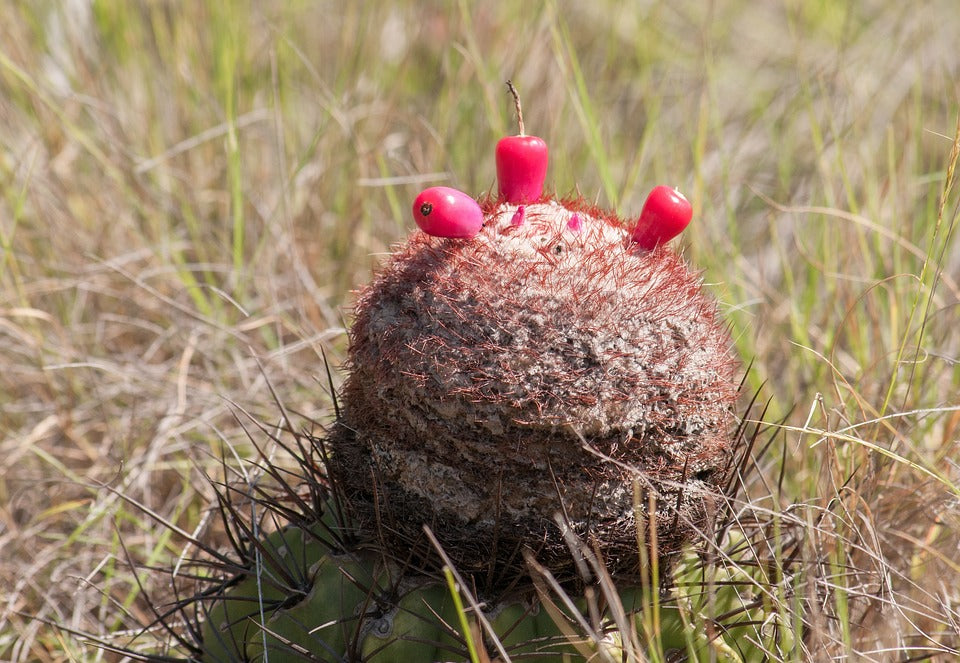
Background and history of Melocactus – Melon cactus
Share
The Melocactus is one of the oldest known cacti and has a long history dating back to the Mayans and other indigenous peoples of Central and South America. It grows naturally in tropical areas such as Brazil, Mexico and the Caribbean, where it is often found on rocky hills and dry savannahs.
What sets the Melocactus apart from other cacti is its cephalium. This woolly, brightly colored part only starts to grow when the cactus reaches maturity, which can sometimes take years. From this cephalium, small flowers and fruits grow. In its natural habitat, these fruits are eaten by birds and insects, which help to spread the seeds.
The name “Melocactus” comes from the Greek word “melon,” meaning melon, because of its round, ribbed shape. In some cultures it is also called “Turkish cap,” because the cephalium resembles a traditional Turkish fez.
Historically, the Melocactus was valued by indigenous peoples not only for its aesthetics, but also for its practical uses. The fruits and flowers were used as food, and the plant played a role in spiritual rituals.
Today, the Melocactus is a symbol of exotic beauty and a popular choice for plant lovers around the world. Its unique appearance, combined with its rich history, makes it a fascinating addition to any plant collection.
